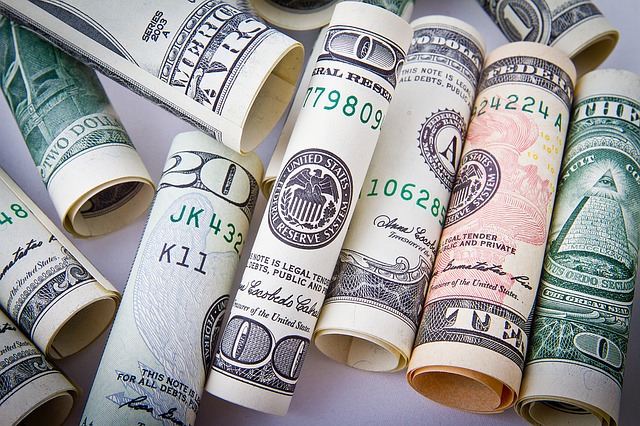All about Money
Updated 4/14/2023 Jacob Reed
1. What are the functions of money?
Medium of exchange: First and foremost, money serves as a medium of exchange. That means it is used to exchange goods and services as well as resources. Without money, resources would be exchanged for products through a barter system which would be inefficient, slow, and would have high transaction costs.

Barter occurs when people trade stuff for stuff (like an umbrella for a book), but in order to have such trades, there must be a coincidence of wants. That is, person A must have what person B wants and B must have what person A wants.
Unit of account: The second function of money is it serves as a unit of account. That means money can be used as a measuring tool (like a yardstick). If a friend tells you they bought a car for $2000, you have a picture in your mind of what a $2000 car looks like. The dollars serve to measure value so you have some sense as to how nice (or not nice in this case) the car must be. If, on the other hand, a friend tells you they bought a car for $50,000, you have a very different picture in your mind because $50,000 is a dramatically different measurement of value than $2000.
Store of Value: The third and final function of money is that it serves to store value. Resources, goods, and services can be cashed out at any time and their value can be stored in the form of money. If, for example, a farmer produces 1 ton of strawberries, the fruits of her labor will be worth nothing in just a few short weeks. The value of the strawberries can be stored by selling them for money. The money can store the value of the strawberries for the foreseeable future so it can be used by the farmer at some point in the future.
2. What gives money its value?
Commodity Money: The first forms of money were commodity money. That means the money itself had value. Wheat, cowrie shells, livestock or gold have all been forms of commodity money. Historically, precious metals have been the most common form of commodity money. The gold may be stamped into a coin, but the gold will give the coin value even if there is no government or bank backing the coin.
Representative Money: This is money that has some sort of commodity backing it up, or giving it value. Gold certificates used to be issued by banks. These paper notes could be exchanged for goods and services and at any point, a person could return to the bank and exchange the notes for the gold giving them value.
Fiat Money: Money today is fiat money. It represents value but it is not valuable in and of itself (paper is worth only a tiny fraction of the value printed on the bill). There is no gold, silver, cowrie shells, etc. giving US dollars value today. Fiat money has value because of legal decree (US bills are “legal tender for all debts public and private”) and because it can be exchanged for goods and services.
3. What are the measurements of the money supply?
M0: M0 or MB is the monetary base. It includes currency in circulation (cash in people’s purses and wallets) and bank reserves. This is not an actual measure of the money supply (M1 and M2 are). While currency in circulation is part of the M1 and M2 money supply, bank reserves are not part of the money supply. The monetary base gives the Federal Reserve an indication of the maximum possible size of the M1 money supply.
M1: The M1 money supply includes currency (coins and bills), checkable deposits (checking account deposits also called demand deposits), and savings account deposits.
M2: The M2 money supply includes all of M1 plus small time deposits (less than $100,000).
4. How does the money supply impact price levels and output?
The Central Banks (the Federal Reserve in the US) can change the money supply through monetary policy. In a scare reserves framework (see monetary tools) the central bank’s actions shift the supply curve in the money market which changes the real interest rate. The new interest rate changes investment and interest rate sensitive consumer spending which causes the AD curve to shift in the AS/AD model. Increases in the money supply generally cause an increase in price levels and output. Decreases in the money supply generally cause a decrease in price levels and output.
Up Next:
Content Review Page: Time Value of Money
Other recommended resources: ACDC (functions of money), Khan Academy (money supply measuring), Marginal Revolution University(Quantity Theory of Money)
